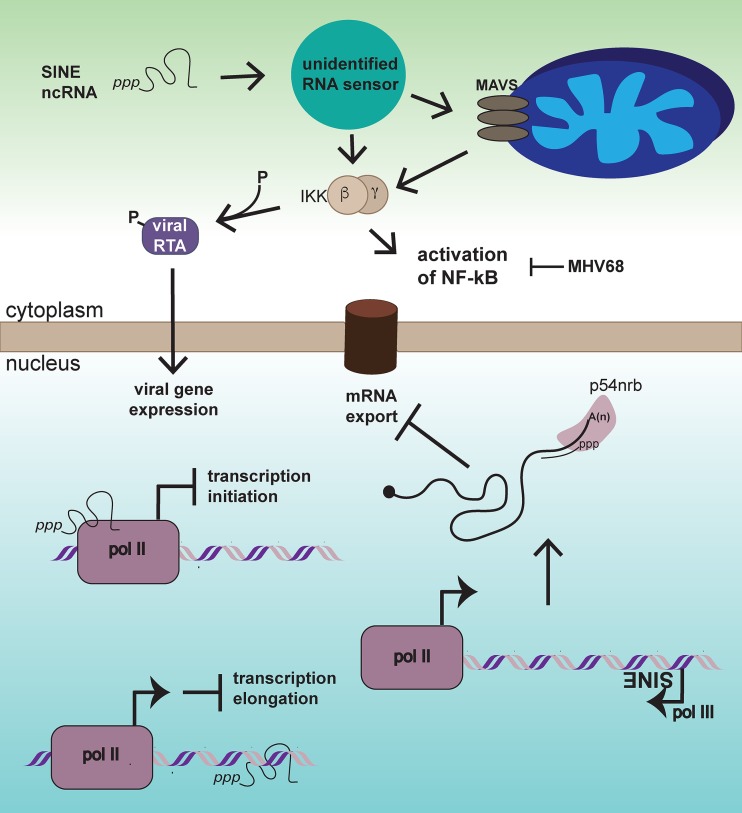FIG 1.
SINE ncRNAs can impact cellular function by distinct mechanisms. Once expression is induced by viral infection or other contexts, nuclear SINE ncRNA can disrupt transcription by binding and inhibiting RNA pol II at the step of initiation, or by binding to genomic loci and inhibiting pol II elongation. Independently expressed SINEs embedded in an antisense orientation to mRNAs can base pair with their cognate mRNA, causing recognition by p54nrb and blocking of nuclear export. In the cytoplasm, SINE ncRNAs trigger NF-κB, likely due to a resemblance to pathogen-associated molecular patterns (PAMPs), i.e., 5′ triphosphate end and double-stranded regions. In the context of MHV68 infection, SINE ncRNAs activate NF-κB through both MAVS-dependent and -independent mechanisms. MHV68 co-opts IKKβ to phosphorylate the major viral transcriptional regulator RTA to enhance viral gene expression, while simultaneously blocking the downstream effects of NF-κB activation. The factor(s) responsible for sensing SINE ncRNAs remains unidentified. See the text for references.

